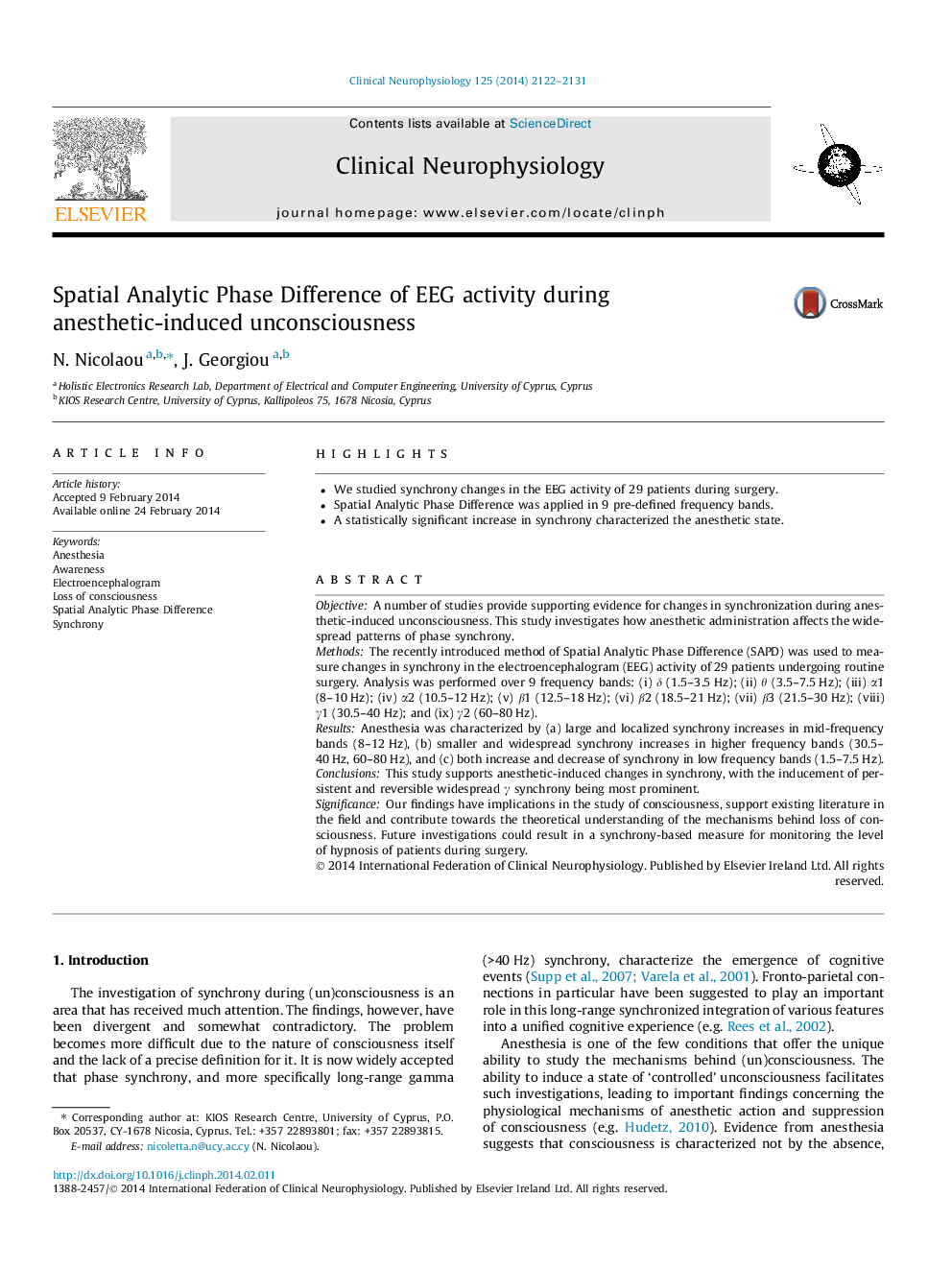| Article ID | Journal | Published Year | Pages | File Type |
|---|---|---|---|---|
| 3042714 | Clinical Neurophysiology | 2014 | 10 Pages |
•We studied synchrony changes in the EEG activity of 29 patients during surgery.•Spatial Analytic Phase Difference was applied in 9 pre-defined frequency bands.•A statistically significant increase in synchrony characterized the anesthetic state.
ObjectiveA number of studies provide supporting evidence for changes in synchronization during anesthetic-induced unconsciousness. This study investigates how anesthetic administration affects the widespread patterns of phase synchrony.MethodsThe recently introduced method of Spatial Analytic Phase Difference (SAPD) was used to measure changes in synchrony in the electroencephalogram (EEG) activity of 29 patients undergoing routine surgery. Analysis was performed over 9 frequency bands: (i) δ (1.5–3.5 Hz); (ii) θ (3.5–7.5 Hz); (iii) α1 (8–10 Hz); (iv) α2 (10.5–12 Hz); (v) β1 (12.5–18 Hz); (vi) β2 (18.5–21 Hz); (vii) β3 (21.5–30 Hz); (viii) γ1 (30.5–40 Hz); and (ix) γ2 (60–80 Hz).ResultsAnesthesia was characterized by (a) large and localized synchrony increases in mid-frequency bands (8–12 Hz), (b) smaller and widespread synchrony increases in higher frequency bands (30.5–40 Hz, 60–80 Hz), and (c) both increase and decrease of synchrony in low frequency bands (1.5–7.5 Hz).ConclusionsThis study supports anesthetic-induced changes in synchrony, with the inducement of persistent and reversible widespread γ synchrony being most prominent.SignificanceOur findings have implications in the study of consciousness, support existing literature in the field and contribute towards the theoretical understanding of the mechanisms behind loss of consciousness. Future investigations could result in a synchrony-based measure for monitoring the level of hypnosis of patients during surgery.
